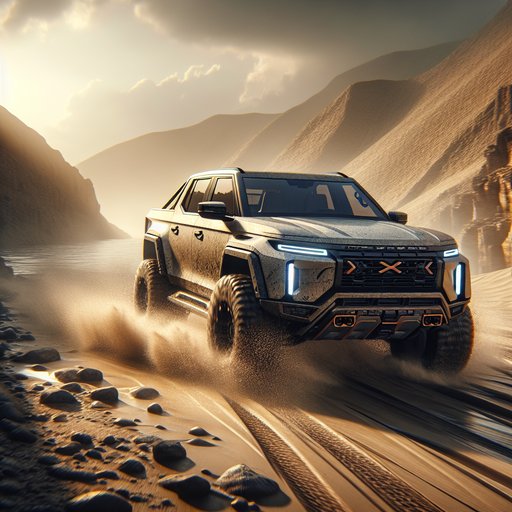
We spent a full day evaluating a 2024 Ford Bronco Badlands (4‑door) with the Sasquatch package on rocky two‑tracks, soft sand, and shallow water crossings to see how its ground clearance, 4WD systems, and chassis tuning translate to real off‑road capability.
Spec-wise, the Badlands Sasquatch arrives ready: 35-inch 315/70R17 tires on beadlock-capable wheels, Bilstein position-sensitive dampers, steel skid plates, disconnecting front sway bar, and front/rear locking differentials (M210 front, M220 rear) with 4.70:1 final drive. Our tester used the 2.7-liter twin-turbo V6 (330 hp, 415 lb-ft) and the 10-speed automatic tied to the “advanced” 4x4 transfer case with 2H/4A/4H/4L and a 3.06:1 low range. Factory figures claim 11.6 inches of ground clearance, approach/breakover/departure angles of 43.2/26.3/37.0 degrees (4‑door Sasquatch), and up to 33.5 inches of water fording. Testing took place at a mixed-terrain off-road park with embedded rock ledges up to 18 inches, rutted climbs near 25% grade, and soft river sand.
We aired the tires down to 18 psi, carried two adults plus recovery gear (~400 lb), and ran multiple laps to heat-soak the shocks. Conditions were dry and 85°F, with a controlled water crossing at approximately 24 inches deep. Ground clearance is genuinely useful here. The 43.2-degree approach prevented bumper strikes on squared, 16–18-inch ledges, while the steel bash plates took the occasional kiss without drama.
The 26.3-degree breakover is the practical limiter on sharp crests; with the sway bar connected we nudged the belly once, but disconnecting it increased articulation and kept tires on the ground, reducing underbody contact. Departure angle was ample—the hitch receiver, not the bumper, was the first thing to threaten contact on tall drop-offs. Rock rails carried scuffs by day’s end, as they should. The 4WD system is versatile and intuitive.
In 4A, the electromechanical clutch apportions torque seamlessly on fast gravel without binding; stability is predictable up to about 45 mph on washboard before the rear starts to skip. For sand, 4H and Baja mode sharpened throttle and kept revs up, preventing bog. On technical rock, 4L with the rear locker engaged climbed ledges cleanly; adding the front locker helped when we intentionally cross-axled the truck. The automatic’s crawl ratio (67.8:1 in this spec) allows precise tire placement, while Hill Descent Control modulates speed smoothly down loose, 20% grades.
Brake-based traction control is well calibrated and rarely heat-faded. Tires and suspension tuning matter as much as hardware. The 35-inch Goodyear Territory MTs floated well in sand and dug through shallow mud, clearing reasonably, though they can pack in wet clay. At 18 psi, sidewalls flexed enough to round off sharp edges without risking bead loss at our speeds.
Bilsteins kept body motions in check over whoops and minimized head toss; after multiple high-frequency sections, damping remained consistent with no noticeable fade. Visibility and the 360-degree trail camera made cresting blind shelves less stressful, and Trail Turn Assist tightened hairpins effectively on narrow, shelfy tracks. Overall, the Badlands Sasquatch feels legitimately trail-ready out of the box and sits near the top of the class against Wrangler Rubicon and Defender 110 for mixed-terrain use. If you plan frequent rock work, consider adding differential skid protection and packing a full-size spare with a robust jack base.
If your off-pavement driving is mostly fire roads, the non-Sasquatch setup (33s) rides quieter and costs less. For serious users who value clearance, lockers, and flexible 4WD logic, this Bronco spec is an easy recommendation.












